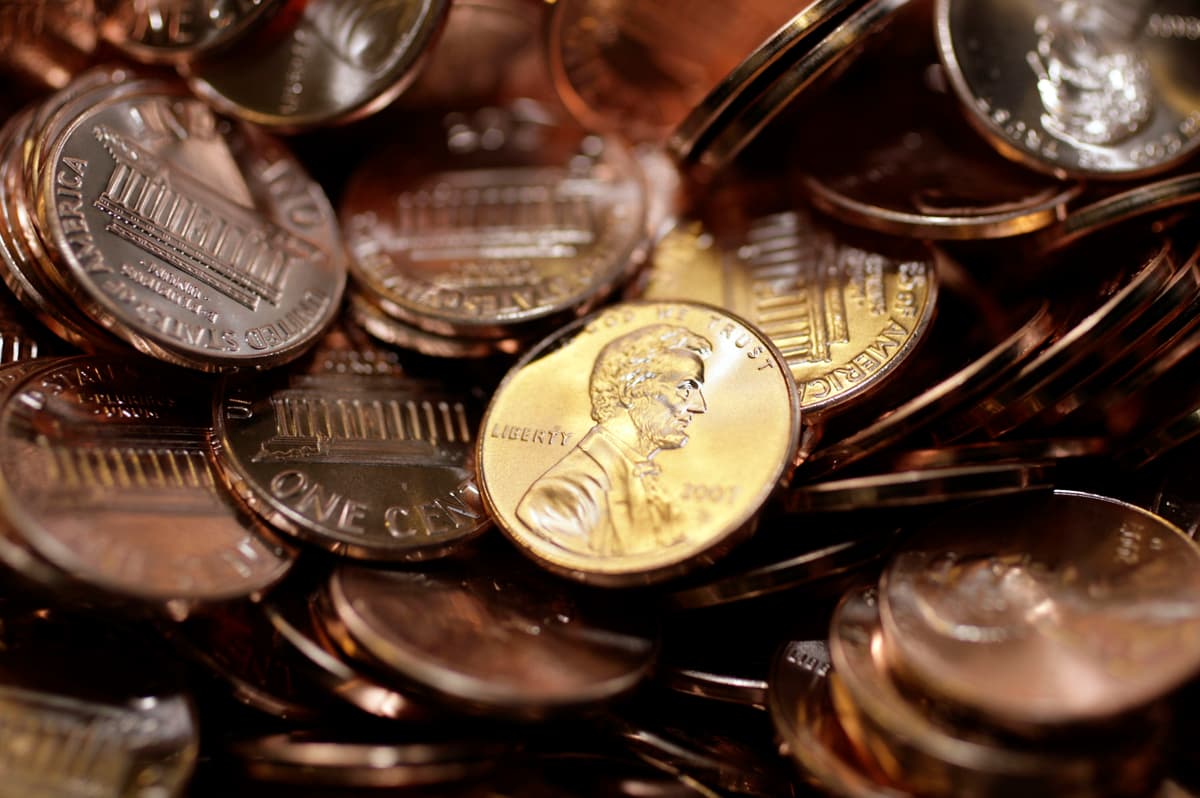A Thought for Your Pennies
With the value of the dollar collapsing, the Times issues a call to abandon the last American unit of account that contains original specie.

Freeing America from the “Tyranny of the Penny” is the Times’s new monetary crusade. The penny “may seem like a harmless coin,” it avers, yet “few things symbolize our national dysfunction more than the inability to stop minting this worthless currency.” Calls to drop the cent coin are hardly new, especially in the fiat currency age that has seen the dollar’s value plunge. The penny, though, with its glint of copper, is our last vestige of honest money.
That’s because the penny, alone among America’s circulating currency, retains the original monetary metal — specie — that the Founders’ generation assigned to it in the Coinage Act of 1792. That’s the law requiring that the United States Mint shall “from time to time” strike “coins of gold, silver, and copper.” Those metals were — and still are — the money, and the coins were as valuable, no more, no less, than the metal of which they were made.
This — and its ring when dropped — gives “sound money” its meaning. Under the Coinage Act, America’s money was defined as a weight in metal. Dollars were either 24.75 grains of pure gold or 371.25 grains of pure silver. Subsidiary coins like the half-dollar, quarter, dime, and what came to be known as the nickel, were made of proportional weights of silver. The cent was defined as “eleven penny-weights of copper” — about 17 grams.
In practice, the Coinage Act defined the dollar at approximately a 20th of an ounce in gold, and it held that value until President Franklin Delano Roosevelt’s default in 1934. The dollar has since shed some 99 percent of its value, plunging to about a 2,500th of an ounce of gold. The silver in the coins was removed in 1964. The penny retains, barely, its original monetary metal, being plated with but 6.25 milligrams of copper.
Seen through the lens of honest money, then, the humble penny can hold its head up high compared with its debased brethren — the paper dollar which is no longer convertible, as it once was, into gold or silver; and the dimes, quarters, and half-dollars which used to shine with silver but are now mere slugs coated with drab “cupro-nickel.” Today’s dollar coin is a worthless alloy of manganese and brass.
Even so, the penny can’t catch a break amid today’s spiraling inflation. With America’s fiat currency having reached a historic low in terms of specie, pennies are increasingly falling out of circulation, the Times laments — “given out as change,” alas, “but never spent.” The Grey Lady speaks of a “pointless penny plague” and a “Perpetual Penny Paradox,” fretting that “we keep minting pennies because no one uses the pennies we mint.”
The New York Sun, a pioneer of the so-called “Penny Press,” had a vested interest in the soundness of the one-cent coin in another era of inflation, the Civil War. America had suspended the gold standard and was issuing paper dollars mocked as “greenbacks” because they were backed by green ink, not silver or gold. Inflation soared some 70 percent amid soaring national debt and supply shortages — in short, a time much like our own.
The Sun, an honest-money paper then as now, sought to assuage this economic uncertainty with the balm of sound coinage. It launched its own version of the gold standard on August 1, 1864, when it featured in the upper right hand corner of its front page a message that read as follows: “Price one cent — in gold; Two cents in currency.” A historian noted that “nobody had one cent in gold, so the Sun readers grinned and paid two cents in copper.”
The Sun’s pricing rebuked the inflationary times. It was a spur to get America back on the gold standard, as it did in 1879. President Obama called the penny a “metaphor” for federal failure. “It’s very hard to get rid of things that don’t work,” he said. The place with which to start is the system of fiat money itself. The Times proposes leaning into inflation and dropping the penny. It calls the coin — now they tell us — “a symbol of deeper rot.”

